What’s On Your Produce?
WHAT’S ON YOUR PRODUCE? (ISSUE 147) SEPTEMBER 23, 2014
By Diane Gold
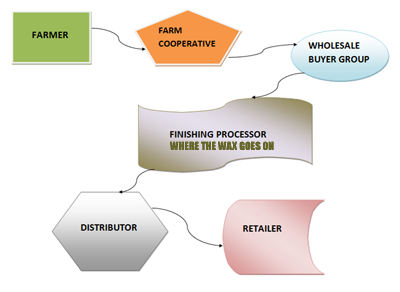 What’s on your produce is a huge question for many of us, especially if we are brought up believing what we see on our fruits and vegetables. For those of us who know full well that we are eating pesticides and wax, there are still surprises. For many, we are not aware of any of the standard ways the fruit and vegetable supply chain works. We are also confused about why organic food matters and what all this talk has to do with our health.
What’s on your produce is a huge question for many of us, especially if we are brought up believing what we see on our fruits and vegetables. For those of us who know full well that we are eating pesticides and wax, there are still surprises. For many, we are not aware of any of the standard ways the fruit and vegetable supply chain works. We are also confused about why organic food matters and what all this talk has to do with our health.
WHAT’S ON OR IN OUR PRODUCE
We have probably considered the fact that some of our produce has pesticides, even organic product. That’s confusing enough. Now, we have to think about wax which is the generic name for a variety of coatings that are placed on our fruits and vegetables that are put on at the finishing processor.
And if we care about eating a plant-based diet or the ethics of saving the planet, what about the animal products that are used in the soils of the nicest organic fruits and vegetables? Do we even want to consider this?
RESPIRATION AND ETHYLENE
In order to understand why we use wax, it’s important to know about plant behavior. Plants are living organisms, so they breathe or respirate. I am humbled by this fact and am working on accepting how sacred this makes plants. This happens after they are harvested at different rates for different plants.
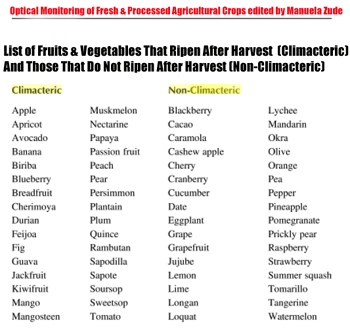 Fruits and vegetables produce a ripening hormone called ethylene. Plants are categorized into two categories: those that ripen after harvest (climacteric species), such as avocados or peaches, and those that do not like oranges or spinach (non-climacteric plants). The ripening process produces a hormone called ethylene, commonly known, not surprisingly, as the ripening hormone. All plants off-gas this substance, but some (the climacteric plants) produce more.
Fruits and vegetables produce a ripening hormone called ethylene. Plants are categorized into two categories: those that ripen after harvest (climacteric species), such as avocados or peaches, and those that do not like oranges or spinach (non-climacteric plants). The ripening process produces a hormone called ethylene, commonly known, not surprisingly, as the ripening hormone. All plants off-gas this substance, but some (the climacteric plants) produce more.
There are a variety of different waxes that we put on fruits and vegetables. The most important function is to keep the plant’s moisture in so it looks good, doesn’t ripen too quickly.
JUST A NOTE ON BANANAS
Most of us have heard about artificially ripening bananas (citrus and kiwis, too, by the way). For those who have not, synthetic ethylene is used so that when bananas get to market, they are the right amount of ripe. Bananas are harvested green. Because they are not ripe yet, the process of off-gassing ethylene, which is natural, has not started yet. What companies do is once the bananas arrive at the processing plant or toward the end of their journey inside the truck that is transporting them, they are gassed. This process causes the bananas to be almost ripe upon delivery and perfectly yellow for the consumer. This process emulates the natural process with synthetics but speeds it up at will.
Go to:
http://www.ams.usda.gov/AMSv1.0/getfile?dDocName=STELPRDC5084611&acct=nosb
for the list of synthetics allowed by the National Organics Program, including ethylene. Depressing.
WAX ON PRODUCE
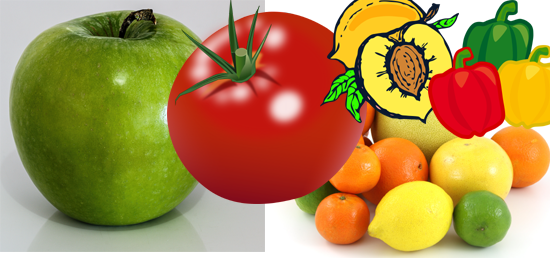 So, when a fruit or vegetable is harvested, it goes through a cycle of maturation, or ripening, and then begins senescence, which is its final stage of life. We might wonder about this wax and its safety, but we should be aware that it exists.
So, when a fruit or vegetable is harvested, it goes through a cycle of maturation, or ripening, and then begins senescence, which is its final stage of life. We might wonder about this wax and its safety, but we should be aware that it exists.
Happily, I just went in to a national retailer that typically buys from the very same producer on a regular basis. This would mean any info about the waxes on produce would be consistent since the producers stayed the same.
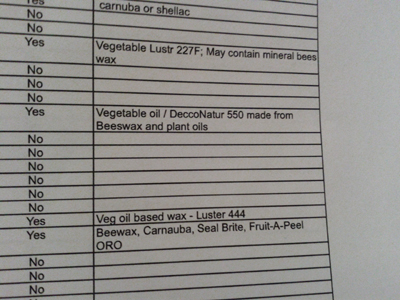
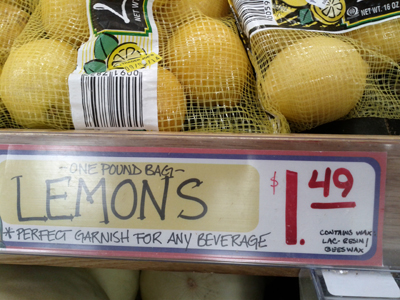
The store had a list of what produce had what wax. I was shocked, and I was doing a happy dance that they even bothered. I’ve been contacting producers, retailers, manufacturers since the 1970s, and this is the first time a list existed without my having had to have them create it. Wax information is now visible to consumers.
Score 1 for transparency.
IS IT PLANT-BASED WAX?
Lots of my food gathering revolves around discerning whether the food I am going to eat has harmed an animal in the process of cultivating it or manufacturing it if I get a packaged good like rice pasta, whether it be in a package (like rice pasta) or grown (like carrots). What the great list (above) that the retailer had compiled did not specifically say whether some of the waxes were vegan. When the list said lac or beeswax, I knew one was from the lac beetle, and the other was from bees. Very helpful in making an informed decision to use or not to use animals in this way. When the list said the word “yes” delineating that wax was used, it was not helpful.
Fortunately, a very ambitious associate at the store is going to do research further. I have never had an employee or company be this cooperative on an issue that should be commonly displayed, as I see it.
IS THE WAX ORGANIC?
Again, referring to the list referenced above, many synthetic products or combinations, unfortunately, are permitted to be used as listed. This means they are man-made and NOT ORGANIC, although they may be Certified USDA Organic products.
WHAT ABOUT THE SEEDS?
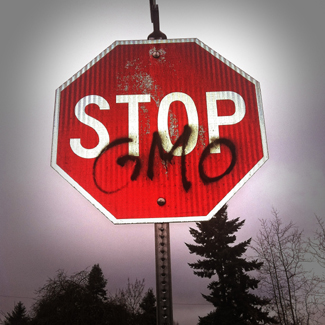
Where did the seeds come from?
Are the seeds genetically modified? If the produce is organic, the seeds are supposed not to have been modified. The soil is supposed to have a history of three years after the last synthetic pesticides were used.
But what if the farm next door uses GM seeds? Well, this is debatable and is problematic.
WHAT’S IN THE SOIL?
As those of us who are gardeners may have realized, farmers use various things to make the soil richer. Nitrogen (protein) is one of the biggest things.
What I didn’t realize was that 25% of the nitrogen used in the soil of US farms comes from Trinidad & Tobago, and the toxicity from the island facilities as well as those in the United States is huge.
Organic farmers don’t use nitrogen which is synthesized in ammonia plants using natural gas or gasified coal. They do use fish from restaurant left over pieces or prepared foods markets throw aways. This means that all my vegan fruits and vegetables, save a few, are not vegan.
There is no label for the soil additives, including for urea which is used a lot. And lots of farms use manure which supports the animal industry.
There are a few vegan farms to whom I raise my glass.
WHAT ABOUT THE ENVIRONMENT?
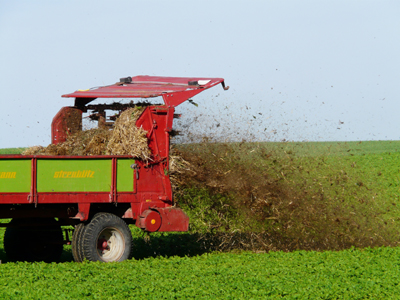 So, there are toxic chemicals being off-gassed from the fertilizer industry which is used on fruits and vegetables that don’t call themselves organic. There’s lots of methane from using cow waste in the soil and from cow waste that sits stagnantly.
So, there are toxic chemicals being off-gassed from the fertilizer industry which is used on fruits and vegetables that don’t call themselves organic. There’s lots of methane from using cow waste in the soil and from cow waste that sits stagnantly.
Some of the waxes (palm and carnauba) used on fruit and vegetables use oil palm trees, which are cultivated by biomass burning to clear the land which emits CO2. According to a report by Mark Jacobson in Journal Of Geophysical Research: Atmospheres, oil palm deforestation accounts for premature deaths as well as 18% of greenhouse gas emissions of CO2.
OUR HEALTH
Is what’s on your produce and what’s on my produce healthy? Although something may be deemed not to cause a disease, it may do harm. We all need to do our own research. How good could wax be for us anyway? And how great can the soil used for farming be if areas that house petrochemical plants are named Cancer Belts due to higher rates of cancer?
The wax on the fruit or vegetable has not been found to cause a body malfunction, but that may be because it would be hard to isolate which factor is causing which problem of the many.
CONCLUSION
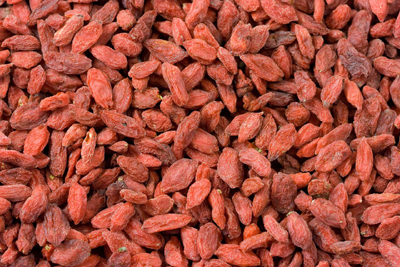 To find out what’s on my produce and your produce is very much a maze. If we are not professional growers, we don’t actually know about many of the items mentioned above. To find out the information is usually no one’s job but our own.
To find out what’s on my produce and your produce is very much a maze. If we are not professional growers, we don’t actually know about many of the items mentioned above. To find out the information is usually no one’s job but our own.
Here’s hoping the ideas in this article make us think so that we can better eat what’s healthy and know that believing what we see is not always prudent.
ACTION STEPS
 If you buy at a local large store, go to the produce department and ask what kind of wax is on your favorite fruits and vegetables. Be persistent since the grocer, most likely, will not know and will say she has no way to find out that information. To cut the process down for you, get the phone number to the store’s regional warehouse. There, ask for the produce buyer. This will start the process of someone’s doing some research for you.
If you buy at a local large store, go to the produce department and ask what kind of wax is on your favorite fruits and vegetables. Be persistent since the grocer, most likely, will not know and will say she has no way to find out that information. To cut the process down for you, get the phone number to the store’s regional warehouse. There, ask for the produce buyer. This will start the process of someone’s doing some research for you.
Once you get your answer about the wax, ask the local store produce manager whether she can post the information publicly so that everyone knows what kind of wax there is.
If you get your food from a local market, ask the same way. The process will probably be shorter, since the owner may have a more personal relationship with a grower.
Good luck. May we, together, make a more transparent supply chain, which will lead to purer, safer and more delicious food.
![]()
If you wish to share your story, please hit reply in your email program to be contacted.
![]()
FEEDBACK
We value your feedback very much.
Please leave a comment below.
Please LIKE us on the website and at
WarriorsOfWeight on Facebook.
You can also follow us on Twitter: @warriorsoweight.
![]()
DIANE GOLD, PUBLISHER AND AUTHOR
Diane Gold, Founder of Warriors of Weight, Turning Habits Into Health, is a mentor in tai chi, kung fu and meditation, a music, fitness and stress expert, dedicated mom, studying plant-based nutrition, peaceful conflict resolution and habit replacement.
She has been researching what we don’t always consider with fruits and vegetables: wax, seed origin, soil contents, fertilizer, global warming from the soil. She says,
“What if we really measured the negative impact we had on others and on the land? What if we didn’t settle for mysterious wax, unknown seed origin, undisclosed soil composition on our produce? What if we all asked our grocers to start putting up wax signs?
“We each impact each other and the earth in so many ways, constantly. We think we can “cheat” being responsible, but we can’t. It’s important to see the big picture.
I am the first to say,
‘Go relax, and take a break. And I will say this to every person every day,’
“But there’s no way to relax ethics. There’s no way to be half ethical. You know what comes next. That’s like being half pregnant. It’s not possible.
“So, let’s be diligent about increasing wax awareness, reading about what chemicals we might be eating. And let’s improve our health and have fun doing it.
“Finally, let us all take good care of ourselves because we are worth it, even if we don’t feel it!”
![]()







